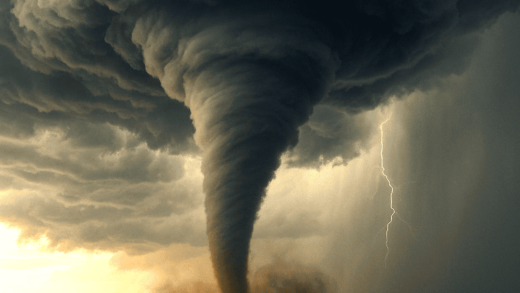Frogs are incredibly diverse, with various shapes and sizes adapted to different habitats. They play crucial roles in ecosystems, acting as both predators and prey. Common species like the American Bullfrog and Poison Dart Frog showcase unique adaptations for survival, including camouflage and vocal communication. Understanding these aspects emphasizes the importance of habitat conservation.
Different Shapes and Sizes of Frogs
Frog species come in a multitude of shapes and sizes, showcasing a fascinating diversity that reflects their adaptations to various environments. For instance, the Paedophryne amauensis, one of the smallest frogs, measures just 7.7 mm in length. On the opposite end of the spectrum, the Goliath frog can reach lengths of over 30 cm and weigh up to 3.3 kg. This wide range of sizes allows frogs to occupy different niches within their habitats.
The variations in shape and size among frogs are crucial for their survival. Smaller species often rely on camouflage to evade predators, while larger frogs may use their size to deter threats. For example, the Goliath frog’s impressive size allows it to dominate its environment, feeding on a diverse diet that includes insects and even small mammals.
Frog species exhibit unique adaptations based on their habitats:
- Wetland Frogs: Many frogs thrive in wetlands, possessing webbed feet that aid in swimming and moving through water.
- Tree Frogs: These frogs often have elongated limbs and adhesive pads on their toes, enabling them to climb and navigate through trees.
- Desert Frogs: Some species have adapted to arid conditions by developing a protective skin that minimizes water loss.
Understanding these differences not only highlights the adaptability of frogs but also emphasizes the importance of preserving their diverse habitats. Each frog species plays a vital role in its ecosystem, contributing to the balance of nature.
Poison Dart Frog Toxicity
The poison dart frog is renowned for its vibrant colors and potent toxicity. What makes these small, colorful creatures so lethal? The secret lies in their diet and the specific alkaloids they absorb from the insects they consume, such as ants and termites. These toxins can be powerful enough to deter predators, making poison dart frogs one of the most fascinating examples of chemical defense in the animal kingdom.
Interestingly, captive poison dart frogs that do not have access to their natural diet lose their toxicity over time. This phenomenon underscores the critical relationship between these frogs and their environment. The chemicals found in their skin serve not only as a defense mechanism but also as a fascinating study in evolutionary biology.
In the wild, these frogs are not just colorful; they are survival experts. Their bright colors serve as a warning to potential predators, signaling that they are toxic and not suitable for consumption. This strategy is known as aposematism, where bright coloration is used to warn off threats.
Ultimately, learning about the toxicity of poison dart frogs offers insight into their unique adaptations and survival strategies, making them a topic of interest for both researchers and enthusiasts alike.
Frog Adaptations
Frogs are remarkable creatures with a variety of adaptations that enable them to thrive in diverse environments. These adaptations include physical features, behaviors, and survival strategies that help them navigate the challenges of their habitats.
One notable adaptation is the development of webbed feet, which enhances their swimming ability. Frogs like the common green frog utilize this feature to move efficiently through water, allowing them to escape predators and hunt for food.
Camouflage is another critical adaptation. Many frogs can change their color or have patterns that blend into their surroundings, providing an effective means of avoiding detection. For instance, the leaf frog’s green coloration allows it to disappear against the foliage of its rainforest home.
Frogs also exhibit unique behaviors to aid their survival:
- Hibernation: Some species can enter a state of dormancy during unfavorable conditions, conserving energy and resources.
- Vocalization: Many frogs communicate through calls to attract mates or establish territory, showcasing their social behaviors.
- Jumping Ability: Frogs are known for their powerful legs, allowing them to leap great distances to escape danger.
These adaptations highlight the incredible resilience and versatility of frogs in the face of environmental challenges. By studying these features, we gain a deeper appreciation for the role frogs play in their ecosystems and the importance of conserving their habitats.
Fascinating Frog Facts
Frog species exhibit some truly astonishing characteristics that often surprise even the most ardent nature enthusiasts. For instance, did you know that certain frogs can survive being frozen? The wood frog, Rana sylvatica, can tolerate temperatures as low as -6 degrees Celsius. During winter, its heart stops beating, and it enters a state of suspended animation. Remarkably, when temperatures rise, it thaws out and resumes its normal life, hopping away as if nothing happened.
Other interesting frog facts include:
- Regeneration: Frogs can regenerate some tissues, allowing them to heal quickly from injuries.
- Color Change: Some species can change their skin color to blend into their environment, enhancing their camouflage.
- Vocalizations: Frogs have a diverse range of calls, with some capable of producing sounds that can travel long distances.
- Skin Absorption: Frogs absorb moisture through their skin, making hydration crucial for their survival.
These fascinating traits highlight not only the adaptability of frogs but also their critical role in ecosystems. Understanding these unique features enhances our appreciation for these amphibians.
Frog Communication
Frog communication is a complex and vital part of their behavior. Frogs utilize a wide range of vocalizations to convey messages, attract mates, and establish territories. Each species has its own distinct call, which can vary in pitch, tone, and duration. For example, the common frog, Rana temporaria, produces a deep croak, while the tree frog offers a higher-pitched trill.
Frogs communicate through:
- Mating Calls: Male frogs often croak loudly to attract females during the breeding season, showcasing their fitness.
- Territorial Calls: These calls are used to warn other males to stay away from their territory.
- Alarm Calls: Some frogs emit distinct sounds when threatened, alerting nearby frogs of danger.
This vocal communication is not just for show; it plays a crucial role in maintaining the structure of frog populations. Understanding these interactions can provide valuable insights into their social dynamics.
The Life Cycle of a Frog
The frog life cycle is a fascinating journey that showcases the remarkable transformations these amphibians undergo. It begins when a female frog lays eggs in water, typically in clusters known as spawn. These eggs hatch into tadpoles, which are aquatic and have gills for breathing.
The life stages of a frog include:
- Eggs: Laid in water, the eggs develop into embryos within a few days.
- Tadpoles: After hatching, tadpoles are mostly herbivorous and grow rapidly, developing legs and lungs as they mature.
- Froglets: Once they develop limbs and lose their tails, they transition into froglets, ready to leave the water.
- Adult Frogs: Fully developed frogs now live on land and return to water for breeding.
This life cycle emphasizes the adaptability of frogs to both aquatic and terrestrial environments. Understanding these stages highlights the importance of preserving their habitats, ensuring that future generations can thrive.
Frog Habitats
Frog species can thrive in a variety of habitats, showcasing their adaptability and resilience. From lush rainforests to arid deserts, frogs have found ways to survive in diverse environments. Rainforests provide a rich habitat with ample moisture and a variety of insects for food. Here, frogs like the red-eyed tree frog utilize the leaves for camouflage and breeding.
In contrast, desert frogs have adapted to extreme conditions. For example, the spadefoot toad can burrow underground and enter a state of dormancy during dry spells, emerging only when conditions are favorable. This ability to cope with harsh environments is crucial for their survival.
Key habitats for frogs include:
- Wetlands: These areas provide breeding grounds and ample food sources.
- Forests: Tree-dwelling frogs benefit from the complex structure of trees for shelter and hunting.
- Grasslands: Frogs in these areas often rely on their camouflage to blend in with the surroundings.
- Deserts: Adapted species can survive with minimal water and extreme temperatures.
Understanding the specific needs of each frog species helps highlight the importance of conserving these habitats to ensure their survival.
Ecosystem Contributions
Frogs play a vital role in maintaining ecological balance. As both predators and prey, they contribute significantly to their ecosystems. Frogs consume a wide range of insects, controlling pest populations and contributing to a healthier environment. In turn, they serve as a food source for various animals, including birds, snakes, and mammals.
Key contributions of frogs to ecosystems include:
- Pest Control: Frogs help regulate insect populations, reducing the need for chemical pesticides.
- Soil Health: Their waste enriches the soil, promoting plant growth.
- Food Web Dynamics: Frogs are integral to the food web, linking various species and maintaining balance.
Recognizing the ecological importance of frogs emphasizes the need for conservation efforts. Protecting their habitats ensures not only their survival but also the health of the ecosystems they inhabit.
Common Frog Species
Several common frog species are found worldwide, each with unique characteristics and adaptations. Familiarizing ourselves with these species enhances our appreciation for these amphibians and their roles in ecosystems.
Some notable frog species include:
- American Bullfrog: Known for its large size and distinctive croak, this species is widely distributed in North America.
- Green Tree Frog: This small, vibrant frog is often found in gardens and wetlands, recognized for its bright green color.
- Poison Dart Frog: Famous for its bright colors and toxicity, this frog’s unique adaptations make it a subject of interest in ecological studies.
- Common Frog: Found in Europe, this species is adaptable and can be seen in various habitats.
Learning about these species and their traits helps foster a deeper understanding of frogs and the importance of preserving their diverse habitats.
Unique Features for Survival
Frogs possess remarkable traits that aid their survival in various environments. These adaptations are crucial for their ability to thrive despite changing conditions.
Some unique features include:
- Camouflage: Many frogs can change color or have patterns that help them blend into their surroundings, evading predators.
- Webbed Feet: Adaptations like webbed feet enhance swimming abilities, allowing frogs to escape threats and pursue prey.
- Vocalizations: Frogs use calls to communicate, attract mates, and establish territories, showcasing their social behaviors.
- Hibernation: Some species can enter a dormant state during unfavorable conditions, conserving energy.
These adaptations highlight the resilience of frogs and underscore the importance of conserving their habitats to ensure their survival in a rapidly changing world.





Comments are closed.